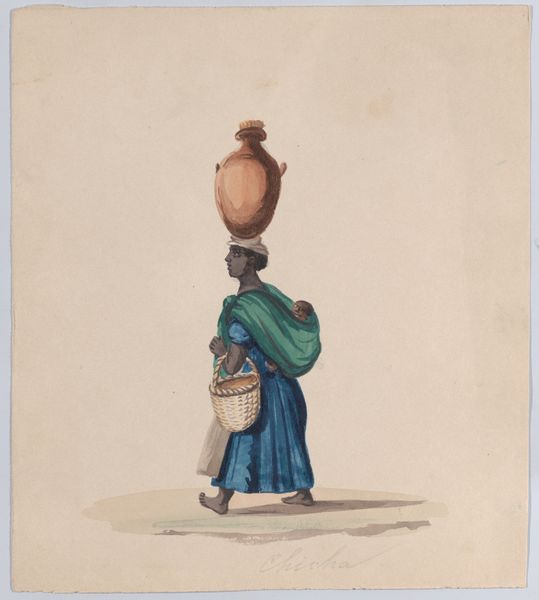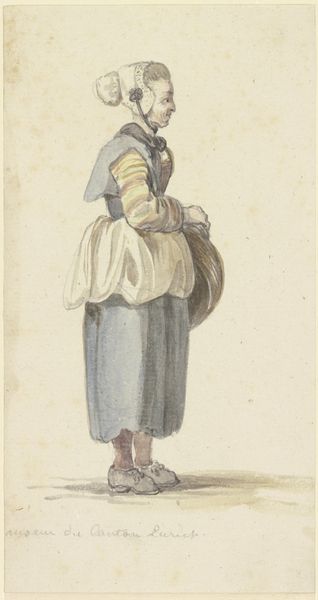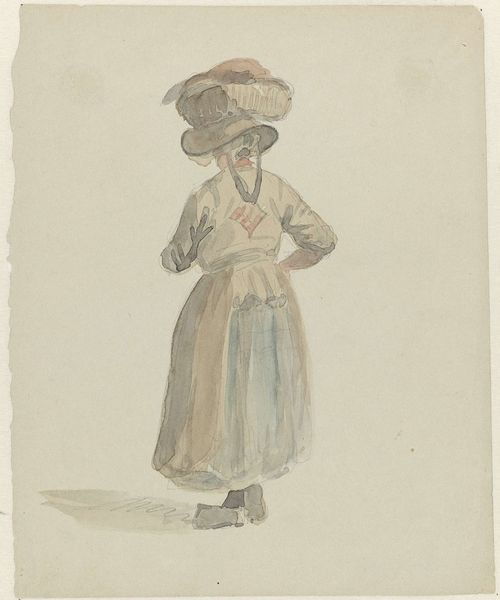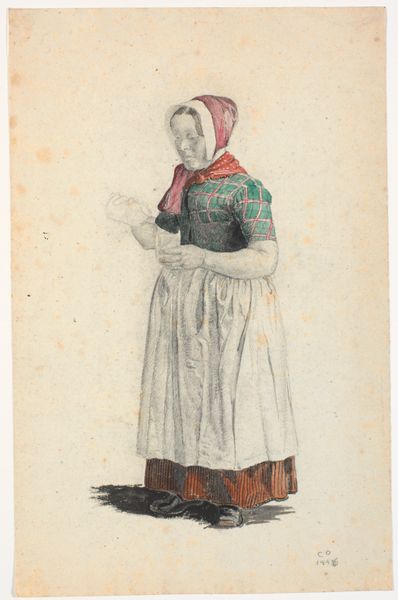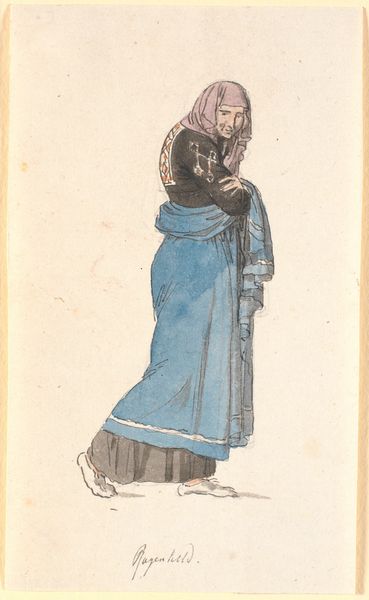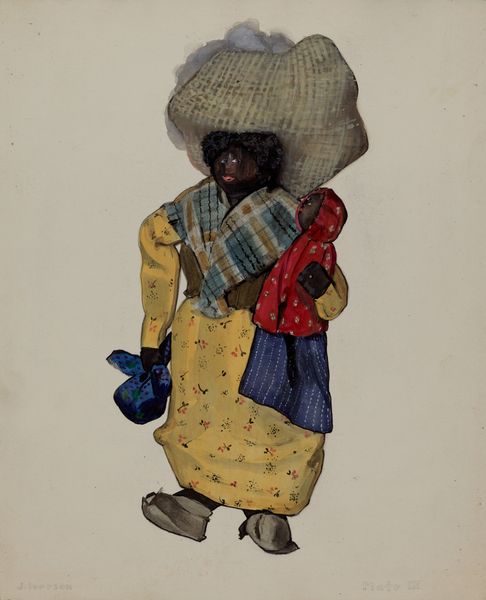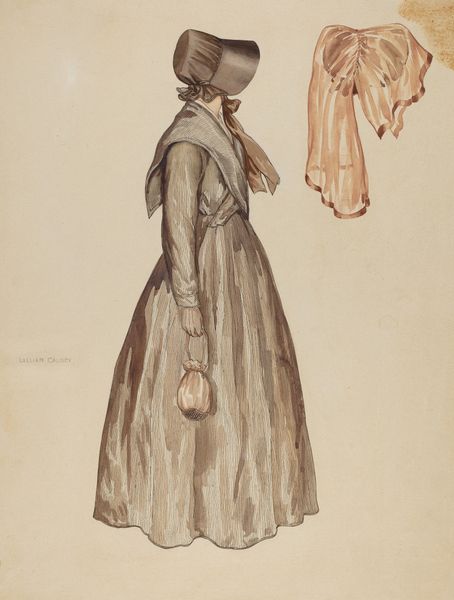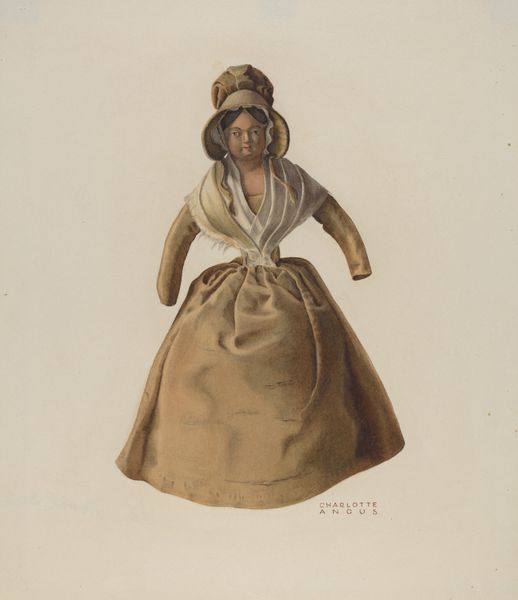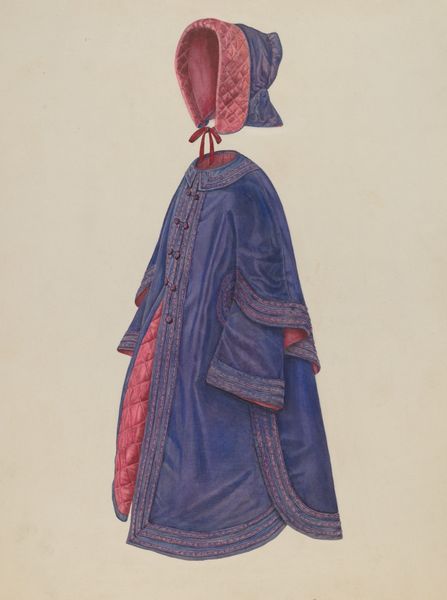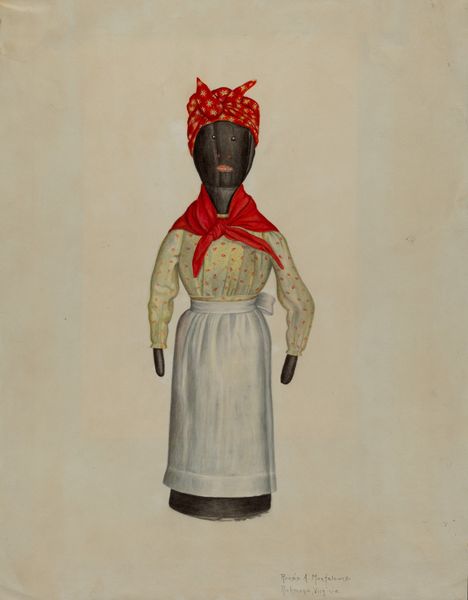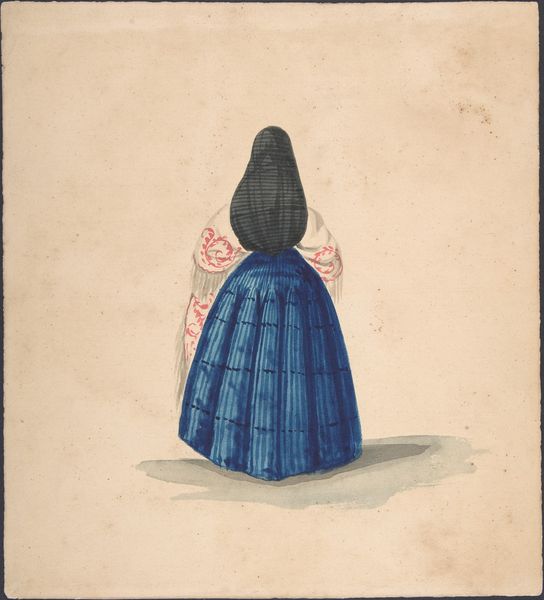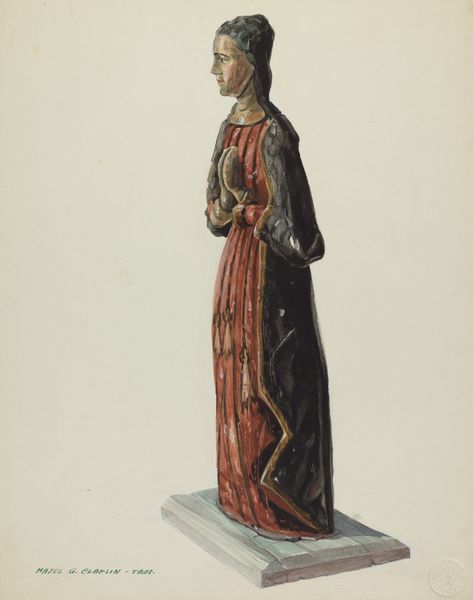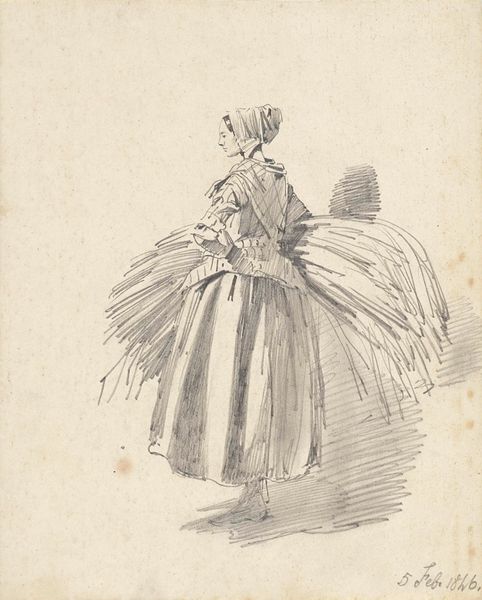
watercolor
#
portrait
#
figuration
#
watercolor
#
watercolour illustration
#
genre-painting
#
watercolor
Dimensions: overall: 22.1 x 13.3 cm (8 11/16 x 5 1/4 in.)
Copyright: National Gallery of Art: CC0 1.0
Editor: Here we have Hans Mangelsdorf's watercolor, "Cast Iron Coin Bank," created around 1938. It's a really simple composition, just a single figure against a blank background. What's particularly striking, though, is how... charged such an everyday object feels. What do you make of it? Curator: It's crucial to understand these "Jolly N****r" coin banks were pervasive cultural objects laden with racist caricature. Mangelsdorf's painting, made during a period of intense social upheaval and racial segregation in the US, almost serves as a document of that troubling cultural landscape. Editor: So, the artwork isn't necessarily endorsing those views, but rather reflecting the context in which it was made? Curator: Precisely. This watercolor acts as a visual record, inviting us to confront the uncomfortable reality of how Black individuals were depicted and objectified. Were these banks common in Germany at the time? How was American popular culture impacting European perceptions? Editor: That's fascinating. I hadn't considered the international angle. So looking at this artwork helps us to understand how deeply embedded racist imagery was, even across different countries? Curator: Yes, and how everyday objects can carry immense political weight. The seemingly innocuous becomes a potent symbol when viewed through a historical and cultural lens. What is our responsibility to keep or display objects like this? Editor: I guess that showing the image provides historical context to understanding cultural attitudes of that era, however harmful those may be? Curator: I learned so much from this piece about historical implications and social narratives in it, as well as about this sensitive visual inheritance. Editor: Definitely, considering the socio-political backdrop changes everything. It's a really sobering reminder of art's power to reflect—and sometimes perpetuate—harmful ideologies.
Comments
No comments
Be the first to comment and join the conversation on the ultimate creative platform.
